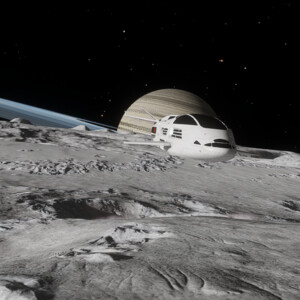#14
16 Aug 2021MoonSeeker2020
'The book of the universes'It is a fascinating story that John Barrow tells in this book. The long history that has had the universe as its object, this "one exceptional fact and still little understood". What is the universe? It sounds like a simple question, but it is among the most difficult questions humanity has ever asked itself. In ancient times, men told different stories, depending on the latitudes, to describe what they saw around them.
In De rerum natura Lucretius introduces the term universum to indicate "all things that rotate in one", in accordance with Aristotle's cosmology according to which the crystalline sphere of fixed stars rotates communicating the motion within it to the spheres of the planets, with the their center is the immobile Earth. It is the conception revived around 130 AD. by Claudius Ptolemy in the Almagest, and refined with a complex system of circles ("deferens" and "epicycles") to account for the apparent retrograde movements of some planets. The Ptolemaic model was adopted for over a thousand years, and continued to be so for some time even after Copernicus with his De revolutionibus orbium celestium in 1543 had taken away from the Earth its privileged position by placing the Sun at the center of the universe.
Despite the condemnation of the Church (which Barrow "forgets" to remember, as well as Galileo's name), the Copernican theory asserted itself during the seventeenth century, perfected by Kepler and described mathematically by Newton. The Newtonian "world system", in Laplace's exposition of it at the end of the eighteenth century, became the commonly accepted model of the universe for over a century. Until the mathematicians understood that, in addition to Euclid's, other geometries were possible, and logically just as coherent. Those "non-Euclidean" geometries could provide a new picture of the astronomical universe, as Karl Schwarzschild first imagined in 1900.
All these "stories" constitute the premise for Einstein's radical turning point in 1915 with the general theory of relativity, "believed by many - says Barrow - to be the most extraordinary creation of the human mind".
His new laws of gravitation explained what the shape of space and the flow velocity of time would look like for any configuration of mass and energy. To this end he had to formulate new equations written in the language of tensor calculus, created by Ricci Curbastro and Levi Civita, which Einstein learned from his friend Marcel Grossmann. In Einstein's theory, the great American physicist John Wheeler once said, “matter tells space how to curve. Space tells matter how to move ».
In the event that the masses are small, as is their speed relative to that of light, Einstein's equations transform into the familiar Newtonian universal gravitation equations. Einstein's first model of the universe from his equations was a static universe, a finite but unlimited positively curved space that exists for eternity, in the past and in the future. Einstein had introduced a suitable cosmological constant, which he later defined as "the biggest mistake of my life". But in doing so, Barrow observes, "he ignored the message his equations were trying to send him: the universe did not want to be static."
The first model of the expanding universe was proposed by the Dutch astronomer Willem de Sitter, but a decisive contribution came from the Russian mathematician Alexandr Friedmann who in the early 1920s discovered that Einstein's equations admitted the possibility of a universe expanding from an initial state (later called the big bang) up to maximum size and then contracted ending its life in a great collapse, the big crunch.
Some time later, in 1927 Georges Lemaître provided a very precise description of the life of our universe, calculated its expansion rate and made a first estimate of the so-called Hubble constant. Starting from the Thirties, new "unexpected" universes appeared on the scene, of Dirac, Tolman, Milne and, finally, the universe of Einstein and Rosen, which contemplated the presence of "gravitational waves". And then the rotating universe proposed by Gödel in 1947, which does not expand, all matter rotates around a certain axis, and admits the unexpected and surprising existence of closed trajectories in space and time: in short, it allows time travel. .
In the 1950s, the theory of a stationary universe proposed by Bondi, Gold and Hoyle was established for some time, a universe without the curvature of space, which has no beginning or end and expands at a constant rate, a theory that was abandoned after Arno Penzias and Robert Wilson in 1965 discovered the cosmic microwave background, the remnant of the big bang predicted by Alpher, Herman and Gamow.
With great narrative wisdom, Barrow's book guides us through the exciting development known by research
